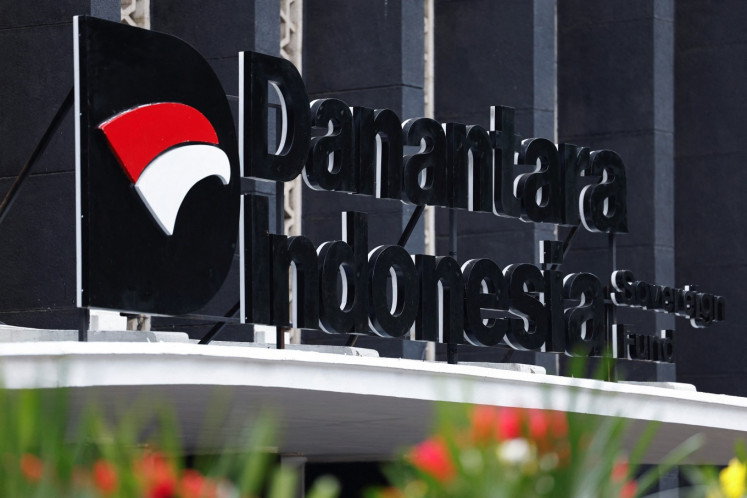Well being: THERAPY FOR PARKINSON’S
Frandy Susatia - Photos Arief Suhardiman, courtesy siloamSILOAM HOSPITALS KEBON JERUK IS OFFERING PEOPLE WITH PARKINSON’S A ONE-OF-A-KIND TREATMENT TO FIGHT THE CONDITIONWhile there is no known cure for Parkinson’s disease, a chronic and degenerative disorder of the nervous system, treatments can help relieve symptoms
Change text size
Gift Premium Articles
to Anyone

Frandy Susatia - Photos Arief Suhardiman, courtesy siloam
SILOAM HOSPITALS KEBON JERUK IS OFFERING PEOPLE WITH PARKINSON’S A ONE-OF-A-KIND TREATMENT TO FIGHT THE CONDITION
While there is no known cure for Parkinson’s disease, a chronic and degenerative disorder of the nervous system, treatments can help relieve symptoms.
The Siloam Hospitals Group is offering people with Parkinson’s a unique surgical treatment called “Deep Brain Stimulation” (DBS), which uses electrical impulses to stimulate part of the brain and relieve Parkinson’s symptoms.
To learn more about DBS therapy, JPlus sat down with neurologist Frandy Susatia and neurosurgery specialist Made Agus M. Inggas from Siloam Hospitals Kebon Jeruk, West Jakarta; the only medical institution in the country to offer comprehensive DBS treatment. Here are excerpts of the interview.
What is Parkinson’s disease?
It’s a progressive movement disorder that is caused by the degeneration of brain cells. While genetic factors are found to play a role in around 10 to 15 percent of all cases; in the other 85 to 90 percent, the cause cannot be identified. Exposure to some environmental toxins and head injuries have also been associated with Parkinson’s. The cells involved are mainly found in an area near the center of the brain called substantia nigra, whose cells produce the neurotransmitter dopamine that helps coordinate movement. When a person’s dopamine levels go down by 60 to 80 percent, Parkinson’s symptoms develop.
What are the symptoms?
The symptoms usually associated with Parkinson’s affect movement. We call them motor symptoms, such as tremors, body stiffness and slowness of movement. Loss of balance is another. There are also non-motor symptoms, such as pain and depression, constipation and difficulty sleeping.
Who is at risk?
People over the age of 60 have a 2 to 4 percent risk of developing Parkinson’s disease. Some people under the age of 40 are also affected, but that’s mostly genetic. Men are 1.5 times more likely than women to be affected. Those exposed to environmental toxins or who have suffered head injuries may also be at higher risk.
While some studies show that having a first-degree relative with Parkinson’s, such as a parent or sibling, can increase a person’s risk of getting the disease; the overall chance of getting Parkinson’s is still very low.
How long does it take for the disease to progress?
The progression will be different for each patient. Some people have mild symptoms for many years; but in others, it can progress much more quickly. In most cases, Parkinson’s is a slowly progressive disease, meaning it worsens over a period of years, not months.
When should I see a doctor?
When you begin to experience symptoms. A diagnosis has to be done clinically, via a careful history and physical examination by an experienced neurologist, rather than through lab tests. A diagnosis depends upon the presence of one or more of the four main motor symptoms. There is no standard lab test yet.
How do we cure Parkinson’s?
There is no cure yet, but we can treat the symptoms. Treatments include medication, surgical therapy, exercise or physiotherapy, lifestyle modification and other complementary therapies. Most Parkinson’s medications work by replacing or mimicking dopamine. However, patients on medications for long periods can suffer side effects, like involuntary movement or periods when the medicine suddenly stops working.
What is Deep Brain Stimulation (DBS)?
It’s an FDA-approved [US Food and Drug Administration] treatment at Siloam Hospitals for people with Parkinson’s disease who are no longer responsive to medication. We surgically insert a stimulating electrode into the brain which we then connect by cable to a small neurostimulator, much like a heart pacemaker, under the skin of your chest.
The neurostimulator sends electrical impulses to the brain to stimulate and modulate the production of dopamine.
DBS will not cure or stop the progression of Parkinson’s, but it will allow the patient to have a better quality of life.
After DBS, the symptoms of Parkinson’s disease will be significantly reduced. Most patients will still need medication even after undergoing DBS, but at much lower doses. This leads to a marked improvement in side effects, such as involuntary movement.
What’s the procedure like?
It takes four to five hours. In the first phase, we use local anesthesia, drill a small hole in the skull and insert a very thin lead or electrode to the area in the brain that is affected by Parkinson’s.
Throughout the first phase, the patient is awake. We work with the patient, asking them to talk or write or move their hands, so that we can determine the proper placement of the electrodes.
In the second phase, we use general anesthesia and connect wires to a neurostimulator placed in the chest.
DBS also includes post-operation services, such as programming and physical therapy. Once a person recovers from surgery, we program the stimulator, reduce their medication dosage and perform physiotherapy.
The good thing about DBS is that unlike other surgeries (e.g., a pallidotomy or a thalamotomy) that damage brain tissue, DBS is reversible and can be turned off or removed if necessary.
This is important: Getting a DBS now will not prevent you from enjoying any new treatments that might be developed in the future.
Since November 2014, we have performed DBS on 12 people with Parkinson’s in Indonesia. The results have been very encouraging. All of the patients have noted significant improvement in motor symptoms and reduced their intake of medication.
Potential side effects?
No surgery is without risks.
There is a 1 to 3 percent chance of bleeding in the brain, seizure or complications from anesthesia.
Our doctors will not only discuss the risks thoroughly with each patient before they decide on surgery, but will during and post-surgery, proceed with meticulous care to ensure negligible to near-zero complication.
This article is part of a series sponsored by Siloam Hospitals Group. For more information, visit siloamhospitals.com.









